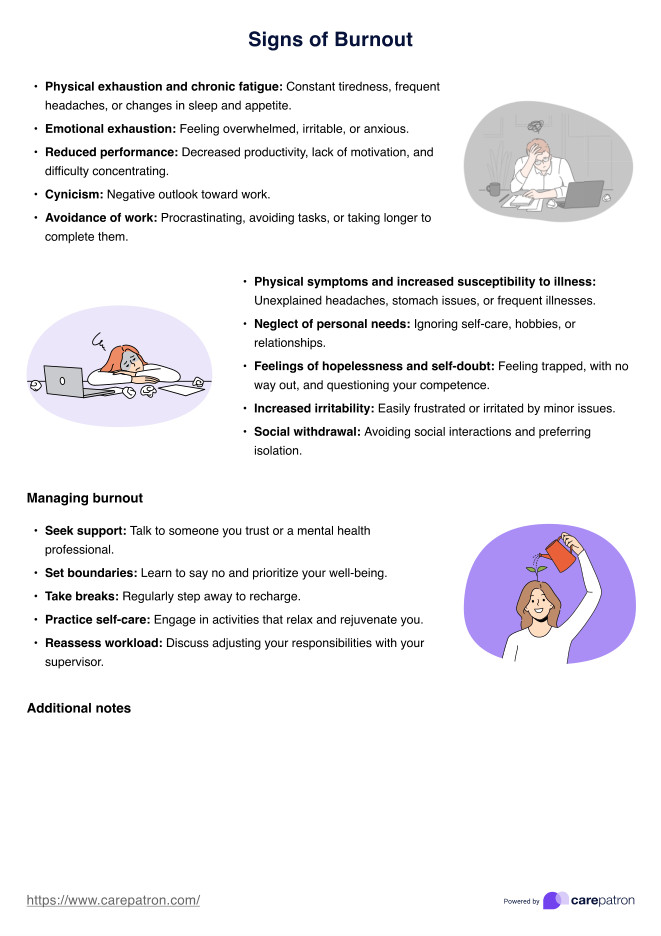Burnout is characterized by physical and emotional exhaustion, reduced performance, cynicism, and detachment from work or personal responsibilities.

Signs of Burnout Handout
Learn the signs of burnout, how to prevent and manage it, and the benefits of using our Signs of Burnout Handout template.
Use Template
Signs of Burnout Handout Template
Commonly asked questions
To overcome burnout, create a burnout recovery plan that includes seeking support, setting boundaries, taking breaks, practicing self-care, and reassessing your workload.
Burnout recovery varies for each individual, but it typically takes weeks to months, depending on the severity and the effectiveness of the recovery strategies implemented.
EHR and practice management software
Get started for free
*No credit card required
Free
$0/usd
Unlimited clients
Telehealth
1GB of storage
Client portal text
Automated billing and online payments











